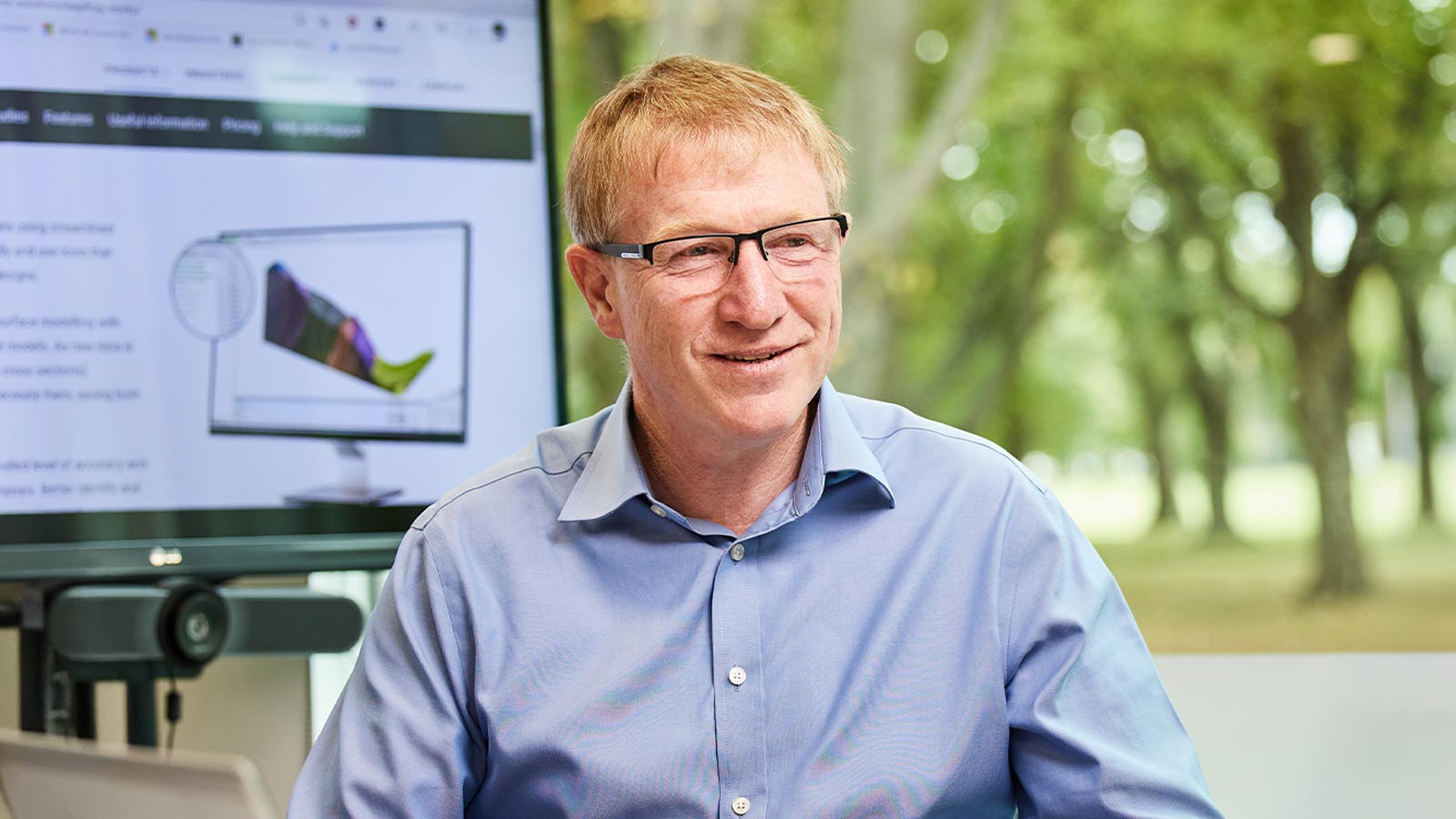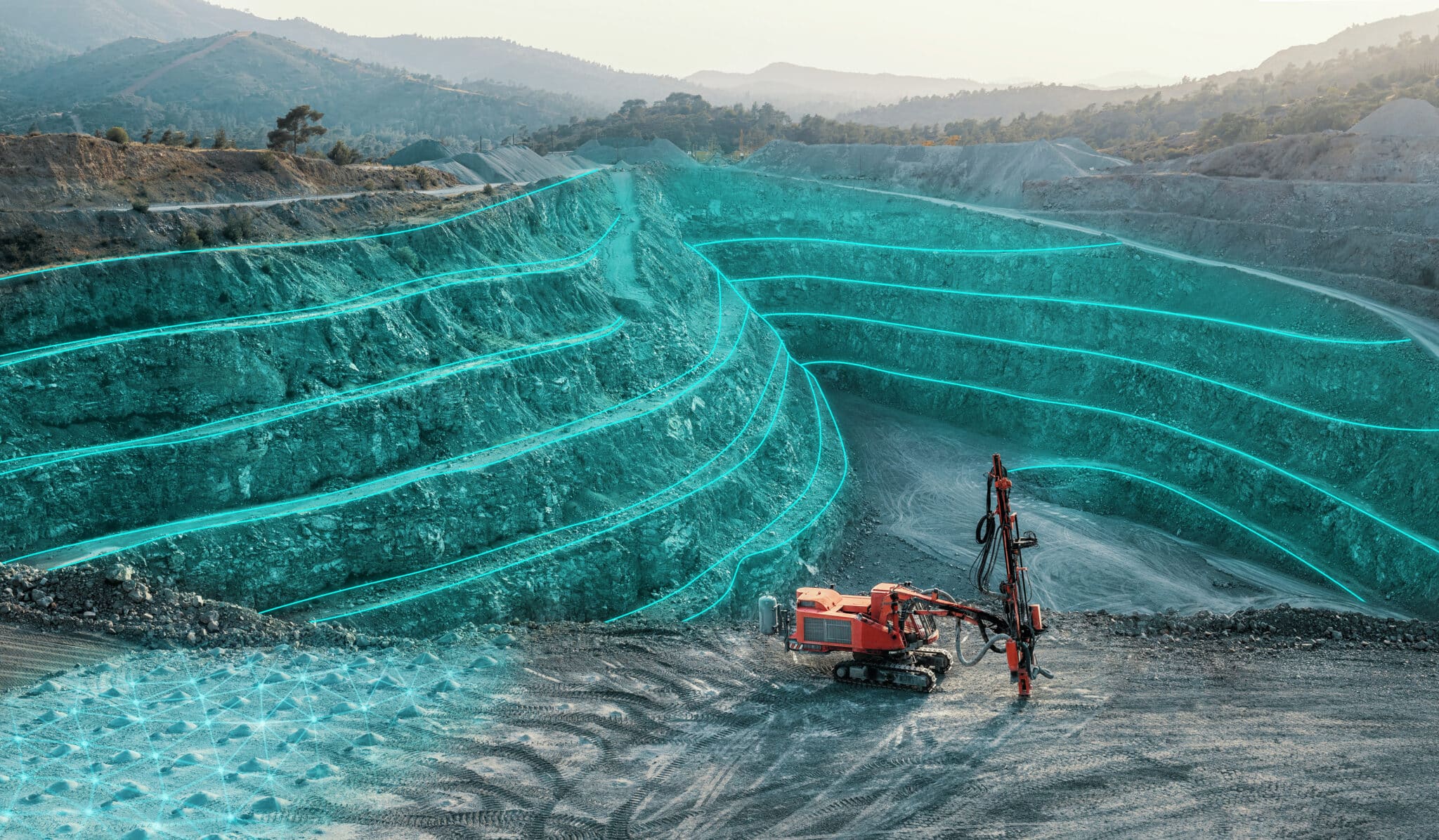Mike Stewart is the Technical Domain Expert for Geology at Seequent and is one of the lucky few who knew the exact path they wanted to take on leaving school. He has enjoyed a successful career in the minerals industries spanning more than three decades and has earned a reputation in industry as someone with deep geological, geostatistical, and mining expertise.
When Mike speaks, people are keen to listen. The Seequent Unearthed team caught up with him to get to know him better.
Hi Mike, thanks for making the time. To kick things off, what’s your secret to a long and rewarding career?
Hard work, good luck and a supportive family. Those are the three essential ingredients that have contributed to my career. As well as that I’ve stayed open to new things, been curious and kept an enquiring mind. And self-educating, that’s important. All these things help keep the work you’re doing interesting and that’s been true of my working life.
What are some of the developments in applied geostatistics that you are excited about?
Uncertainty modelling needs to be turned on its head. The algorithms for modelling uncertainty have mostly been available for decades – but adoption has been slow. In large part this is because building uncertainty models has been seen as an expert subject, where models are carefully forward constructed in a series of sequential steps. Instead, we need to focus on the uses of simulation and make it easy to create and validate fit-for-purpose uncertainty models that are tailored to specific problems where quantifying uncertainty can materially improve decision making. And let’s be honest, the agonising process of modelling and fitting variograms should be a thing of the past. That process should also be inverted – to present the user with geologically plausible variogram models that don’t contradict the available data and allow them to test sensitivity to choice of model.

Seequent Technical Domain Expert, Geology, Mike Stewart
You have played an instrumental role in shaping and steering the future of Leapfrog Edge which has been in market now for about seven years. How has Seequent’s resource estimation workflow evolved since its inception?
With Edge, we set out with the objective of bringing the same revolution to resource estimation as Leapfrog Geo brought to geological modelling – software that is robust, intuitive, easy to learn, highly visual and dynamically linked.
The first iteration of Edge was really a kind of prototype, which took the simple concept of domain estimation, and embedded all the tools required to perform that into a single object. It works really well for estimates with only a small number of domains and variables, but was click intensive for more realistic resource estimates, with multiple domains and variables. So, what we’ve been working towards is interface driven ways of making it easy to set up and manage those more complicated scenarios. We’ve made good progress and there is more to come.
Seequent has also been working hard on laying the foundations for the next generation of modelling tools – by building a fully integrated cloud computing platform. Evo is key to our plans to deliver a full suite of geostatistical modelling capability, which integrates existing desktop solutions with the power and flexibility of cloud computing and scripting.
It certainly seems you like a good problem to solve. How has technology shaped your career?
It was very exciting getting my first laptop at the British Geological Survey but it had something like 16Kb of RAM or close to it. It was only for word processing, but it was a huge step to go off a mainframe onto a laptop in the early 90s. But the technology that provided me with the best learning opportunity was during my time at OceanaGold’s Macraes mine. We had seven rigs and were running a huge drilling programme, and the intention was to try and triple the size of the resource. I was employed as a computer geologist having shown some aptitude, and was given the task of turning sectional interpretations into 3D wireframe models using Minesite3D which was state of the art at the time. I got to do that on a Silicon Graphics workstations that, at the time, cost as much as a house. It was a turning point in my career because I got to take the ability to think geologically in 3D and translate that into computer representations.
What is your best tip for keeping up with the pace of change in our rapidly evolving world?
Know your subject. My career has been built on a very sound geological education. I’ve considered myself lucky in that I’ve stayed in one field my entire life. I left school knowing that I wanted to do geology, and I’ve stayed with geology my entire career which is a bit mad really. My father was a geography teacher and, you know, I liked rocks. I liked the detective story of it. Getting a solid grounding in that science and having very strong geological underpinning is the framework off which you build knowledge and being knowledgeable is the key to being relevant in the age of AI. Machines are tools to help automate some tasks and reduce work burn, but they don’t do the thinking for you. And if you let them, it’s going to be at your peril.
The most useful thing I did at university was study the philosophy of science, specifically the history of where scientific thinking came from in relation to geology. The critical thinking I learned was just such an important skills to learn, and still is today. Deep knowledge and critical thinking are not things that are going to be replaced by AI and machine learning. You still need to be able to understand the data you’re giving AI, articulate the questions you’re asking it and the strength of its answers and whether those insights are actually useful or real.
Your career has had plenty of highlights, but are there any lowlights you’d care to share?
I had one absolutely crash and burn presentation in front of a lecture theatre of about 150 geology students who came to visit the British Geological Survey when I worked there. I was asked to give a short presentation on something like geological mapping. I just completely tied myself in knots with the content, the depth of it, the delivery. It was probably the first time I’d presented to a crowd that big. I didn’t practice beforehand and got totally tongue-tied. It was one of those moments when you just wanted the ground to open and swallow you up. Someone stepped in and rescued me. I didn’t do another for a long time and when I did, I practiced beforehand.
What do you do when you unplug from work?
We have 10 acres of very degraded hill pasture that we are nursing back to health. So far, we’ve planted between 8000 and 9000 native plants and we’ll crack 10,000 this year. Most of the property is not accessible by vehicle so we have to carry things a fair distance. It’s hard but rewarding work. And we have two golden retrievers who help keep us busy (and happy).
What’s a favourite book or podcast that you’d rave about?
I like reading novels, but my criteria are that they have to be short and well written. There’s a fabulous collection of short stories by a woman called Lucia Berlin called A Manual for a Cleaning Woman: Selected Stories. They’re just like little diamonds in that they’re crystal clear and beautiful. I like a history podcast – I’ve listened to 300 episodes of both The History of Rome and Revolutions by Mike Duncan.
What’s a piece of technology you’ve bought recently that you liked?
Given the size and exposed location of our property, I really like those little timer taps which let you set watering frequency. And I LOVE my Danish active speakers (Buchardt A500’s) coupled with a high definition streaming service (Tidal).
Connect with Mike on LinkedIn here
* Mike holds a Master of Science (First Class Hons) in Geology from the University of Canterbury, a Postgraduate Diploma in Geostatistics from Ecole des Mines de Paris in Fontainebleau and is a sought-after speaker at industry events. He is currently a member of the Australasian Institute of Mining and Metallurgy (AusIMM) and the Australian Institute of Geologists and is a Mineral Resource Estimation Conference 2025 Committee Member. He is a former Secretary of AusIMM New Zealand branch.





